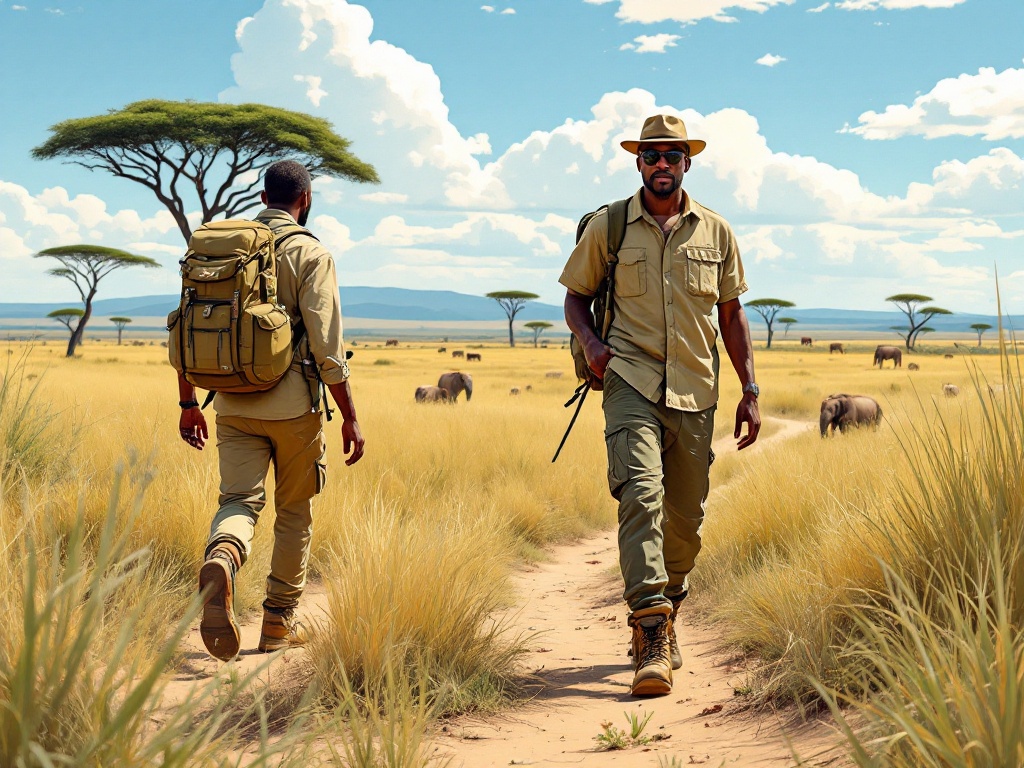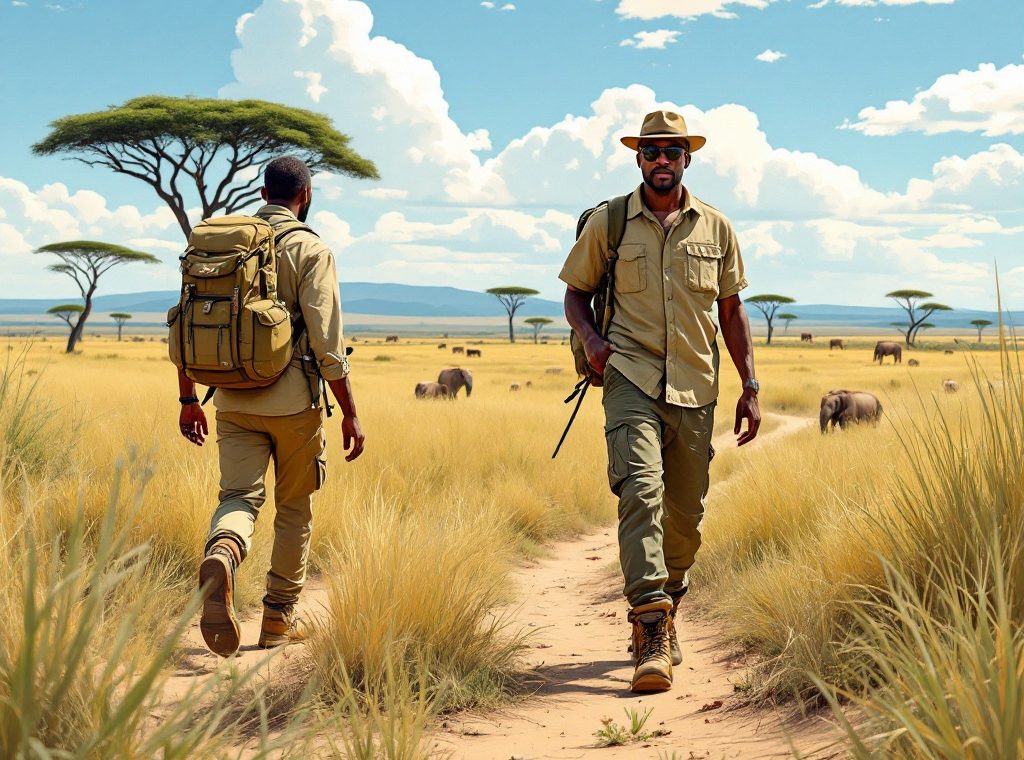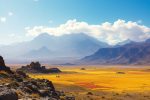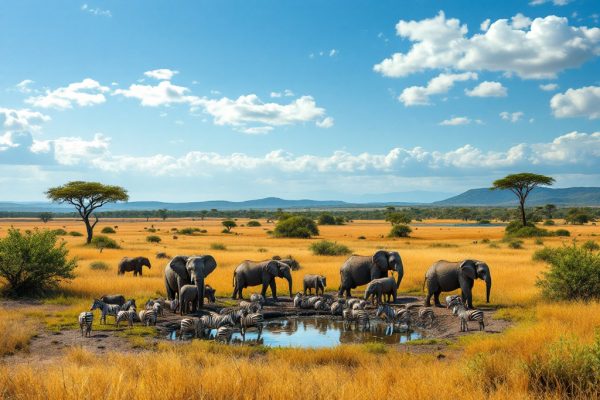What to Wear on a Safari in Kenya
Embarking on a Kenyan safari? Discover the essential clothing and gear for an unforgettable adventure! Learn how neutral colors, like khaki and olive, enhance wildlife viewing while breathable fabrics keep you comfortable in the African heat. From sturdy hiking boots for traversing rugged terrain to protecting yourself from the sun and insects, this guide ensures you’re well-prepared. Pack smart and create lasting memories on your incredible safari journey! Read on to discover more.
Important information

- Wear neutral-colored, light, loose-fitting clothing made of breathable fabrics like cotton or linen for comfort and to blend in with the environment. Avoid blue and black as they attract tsetse flies.
- Pack long-sleeved shirts and pants for protection against insects, thorns, and the sun.
- Choose sturdy, closed-toe walking shoes or hiking boots for navigating the terrain. Bring moisture-wicking socks to prevent blisters.
- Essential protective gear includes sunscreen, a wide-brimmed hat, sunglasses, and insect repellent.
- Pack a lightweight, waterproof jacket for unexpected rain and warm layers for cooler mornings and evenings.
Essential Clothing for a Safari
Pack light, loose-fitting clothing made of breathable fabrics for your Kenyan safari to stay comfortable in the African heat. T-shirts and shorts are ideal choices. Other suitable options include light skirts, jeans, or safari trousers.
Casual, Loose-Fitting, and Lightweight Attire
Pack loose, casual clothing made of breathable fabrics like cotton or linen for optimal comfort during your safari adventure. These lightweight materials will keep you cool and regulate your body temperature, especially important on game drives. Loose-fitting styles also offer greater freedom of movement. Neutral-colored clothing is recommended as it blends in with the surroundings.
Light and Neutral-Colored Clothing
When preparing for a Kenyan safari, pack light clothing in neutral colors like khaki, beige, or olive green. These shades blend in with the surroundings, enhancing wildlife viewing opportunities. For walking safaris, pastels are recommended.
Long-Sleeved Shirts and Pants
For crucial protection against biting insects like mosquitoes, thorny plants, and the sun’s harmful rays, opt for long sleeves and pants. Choose lightweight, breathable fabrics to stay comfortable and cool.
Avoid Blue and Black Colors
When embarking on a safari adventure, consider your clothing choices carefully. Tsetse flies are attracted to blue and black clothing, which can be a nuisance in certain areas. To ensure a more pleasant safari experience, opt for lighter-colored attire.
Footwear Recommendations
For your safari adventure, prioritize closed-toe shoes such as sturdy walking shoes or hiking boots. These offer essential safety, ankle support, and reliable traction on varied terrain. This robust footwear will also shield your feet from thorns and insects, ensuring a comfortable and safe experience.
Waterproof options are highly recommended for traversing wet areas, providing optimal protection and comfort. While sandals are suitable for relaxing at the lodge, they are not ideal for the safari terrain itself. Remember to pack moisture-wicking socks to enhance comfort and prevent blisters during long walks.
Closed-Toe and Walkable Shoes
Pack comfortable and durable closed-toe shoes, such as sturdy walking shoes or hiking boots, for navigating the rugged terrain and wildlife encounters during your Kenyan safari. These will offer crucial support and traction. Sandals are ideal for relaxing at the lodge after a day of exploration. Break in your footwear before your trip to prevent blisters.
Moisture-Wicking Socks
Pack moisture-wicking socks for a comfortable safari. These essential items keep your feet dry by pulling sweat away from your skin, preventing blisters and discomfort during long walks and exciting game drives. Happy feet make for a happy safari.
Protective Gear and Accessories
Sun protection is key. Pack sunscreen, sunglasses, and a wide-brimmed hat.
Ward off insects. Bring insect repellent to protect against mosquitoes and other biting insects.
Shield yourself from the elements. A lightweight scarf or bandana offers additional protection from sun and dust.
Capture the moment. Pack a good camera with extra batteries and memory cards to document your wildlife encounters.
Enhance your viewing experience. Don’t forget binoculars for up-close wildlife viewing.
Stay hydrated and prepared. Carry a small backpack for essentials like water, snacks, and other necessities.
Sun Protection Essentials
Protect your skin from the sun’s harmful UV rays by using sunscreen, sunglasses, and a hat. A wide-brimmed hat offers superior protection for your face and neck. Ensure your sunglasses provide UV protection. Choose a broad-spectrum, high-SPF sunscreen to prevent sunburn and long-term skin damage. Seeking shade during peak sun hours also helps minimize exposure, but remember some UV rays can still reach you even in shaded areas.
Insect Repellent and Bug Spray
When preparing for your trip, pack insect repellent containing DEET or picaridin for optimal protection. A mosquito net offers additional security and is worth considering.
Sunscreen, Sunglasses, and Hats
Safeguard your skin from Africa’s intense sun with a high SPF sunscreen. This is your essential first line of defense.
Protecting your eyes is equally crucial. Sunglasses shield them from harmful UV rays and minimize glare.
A wide-brimmed hat provides further defense, shading your face and neck.
Additional Safari Essentials
A lightweight, waterproof jacket is essential for unpredictable weather, offering excellent protection against sudden downpours. For added warmth on chilly mornings and evenings, pack layers like a fleece jacket or a sweater. These will keep you comfortable when temperatures dip.
Lightweight Waterproof Jacket
Pack a lightweight, waterproof, and breathable jacket for comfort and easy storage on your safari adventure, a foldable one is ideal for unexpected downpours.
Warm Layers for Cooler Times
Pack a warm sweater or fleece for chilly morning and evening game drives. Be prepared for fluctuating temperatures.
Packing Tips for a Safari in Kenya
When preparing for your Kenyan safari, pack light clothing and essentials in a soft-sided bag or duffel. These are ideal for safari vehicles, unlike cumbersome suitcases. A small backpack is also recommended for carrying necessities during game drives.
Packing Light with Soft-Sided Bags
Use a soft-sided bag for your safari, as it’s better suited for small planes and safari vehicles.
Pack light due to baggage weight restrictions.
Use packing cubes or compression bags to organize clothes, save space, and reduce wrinkles.
Choose neutral-colored clothing to blend in with the surroundings.
Pack sturdy and comfortable walking shoes for the terrain.
Avoid bright colors, especially white and neon shades, to prevent attracting animals.









